Last Updated on January 23, 2024
Have you ever stopped to ask where your flowers come from? Currently, 80 percent of flowers sold in America are grown overseas.
Not to mention most florists toss 40 percent of the stems they purchase!
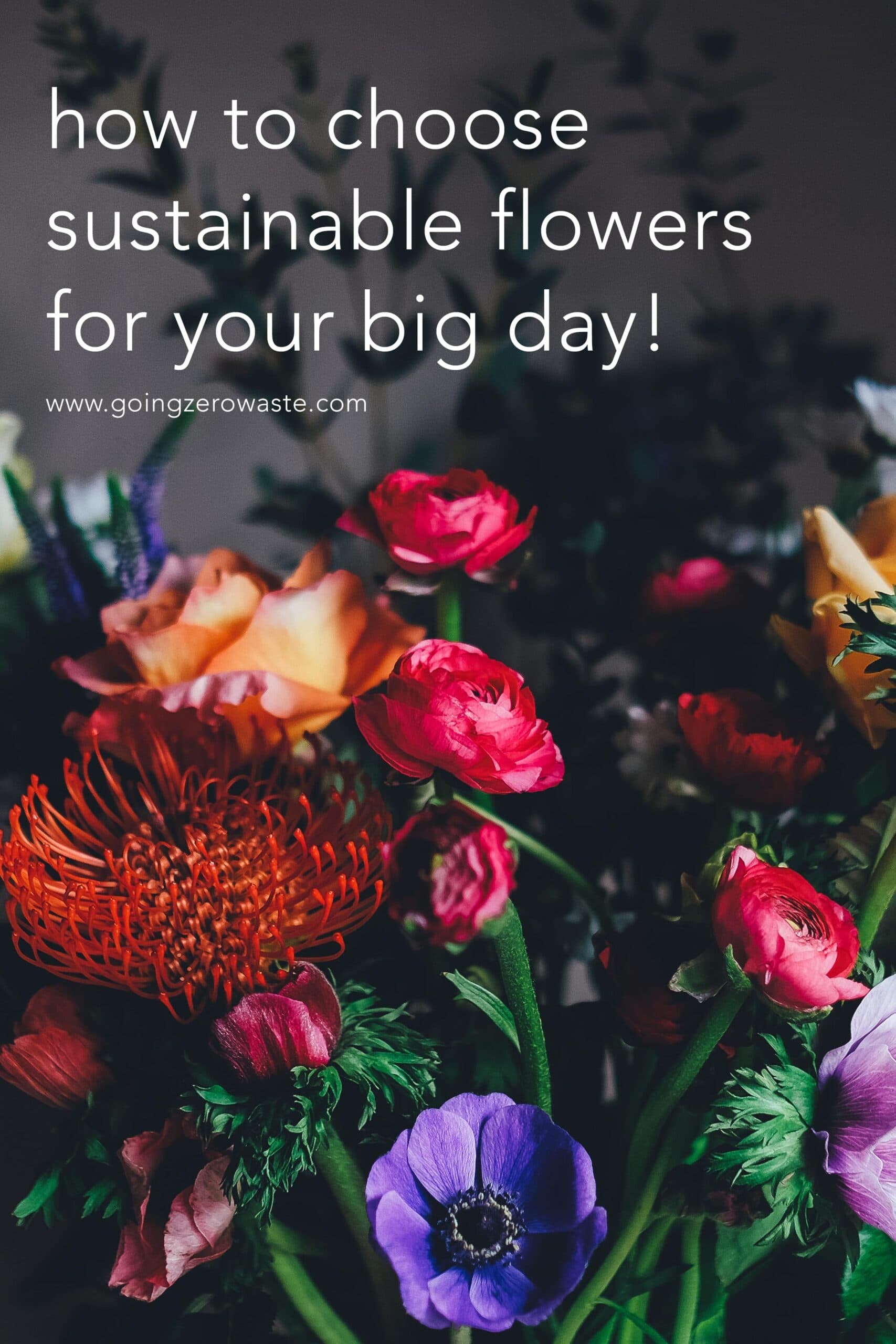
It’s important we make better, more sustainable choices when it comes to flowers, but where do we begin?
I decided to reach out to Chelsea Hohn, owner of Bhakti Flowers, a sustainable florist business in Michigan, to get some answers.
The long and short of it?
Getting locally grown flowers from your local florist is so much better for the environment, but there’s way more to consider than just sourcing.
Here’s how to get sustainable flowers, according to Chelsea.
choose local:
Whenever you buy flowers, it’s a good idea to support a local florist near you, rather than ordering online.
This will help boost your local economy, and it also takes less time to get to you, resulting in less carbon emissions.
“Buying locally is always going to be more sustainable.
You’re supporting your local economy and that is so, so important,” says Chelsea.
According to Chelsea, buying from your local florist is also better because it’s easier to communicate to your florist that you would like them to use sustainable practices for your order.
For example, if you’d like plastic-free flowers, you can simply ask your local florist to wrap them in butcher paper.
This will create a demand for more sustainable practices and help you develop a rapport with your florist.
However, be sure to ask your florist if they have any locally sourced blooms on hand too.
Not only should you head to a local florist, but you should also grab flowers that are locally grown!
“I typically define ‘local’ within 200 miles of my location,” says Chelsea. “Make sure to ask your florist where your flowers are coming from.”
Most florists source their flowers overseas, so don’t be surprised if your florist does the same.
Still, it’s a good idea to ask your florist where they source theirs from, and make it known you’d prefer locally grown blooms.
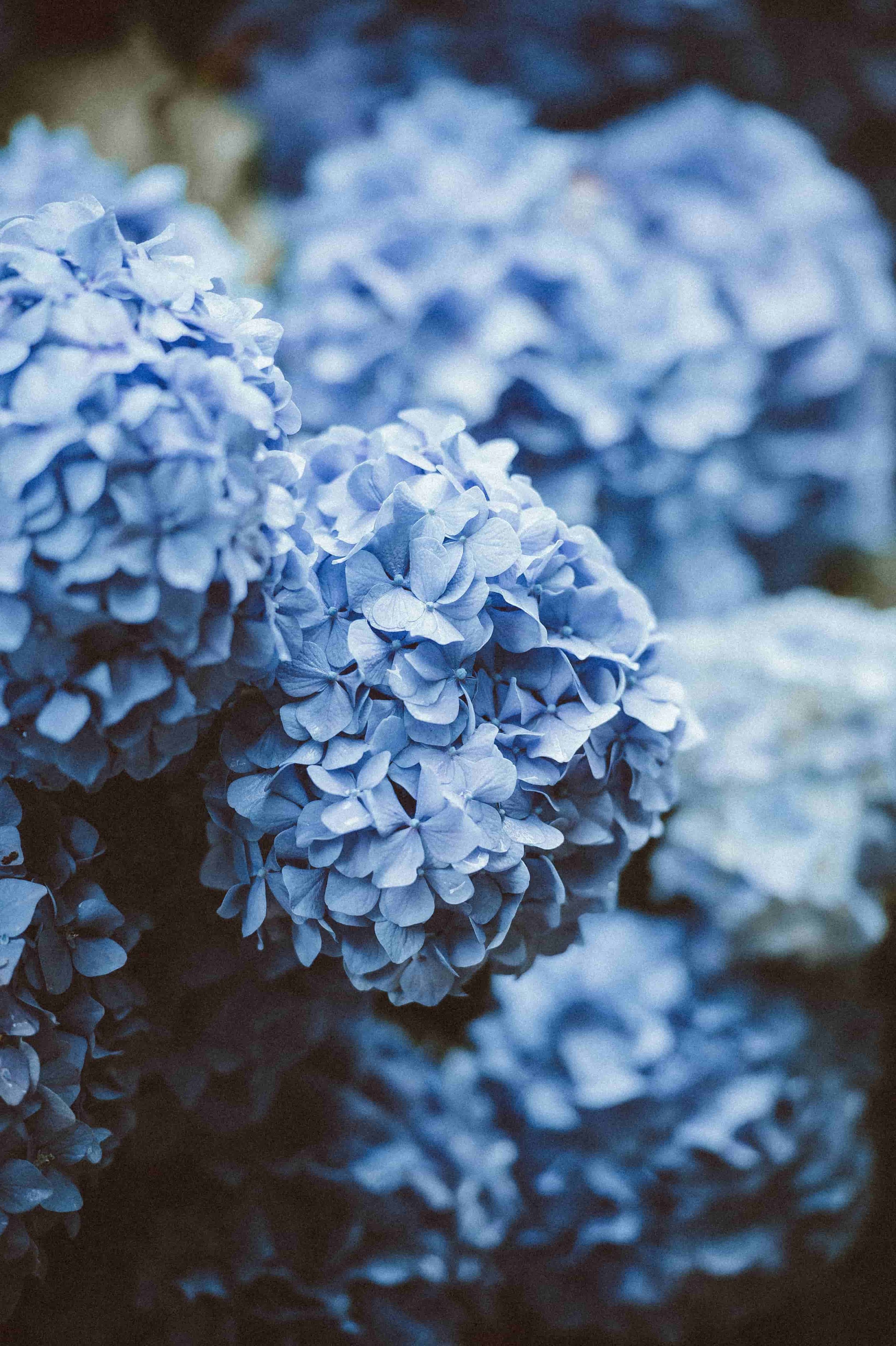
When flowers are shipped overseas, they have a huge carbon footprint.
For example, in America alone, the roughly 100 million roses grown, shipped and purchased on Valentine’s Day produces approximately 9,000 tons of carbon dioxide emissions. Isn’t that insane?
Seeing as most flowers are grown overseas, it’s really important you ask your florist for more local options.
Even if they don’t have any, it will put the idea in their head and possibly spur curiosity in them.
However, there’s several things to consider about local flowers too: Depending on where they’re being grown, and what the climate it like, you may not be able to get them year-round.
For example, in cooler climates like Michigan, it’s almost impossible to source flowers locally year-round.
The growing season just doesn’t allow it.
“In a perfect world, we would be able to source locally year-round from growers using organic practices,” says Chelsea, “But the weddings must go on, even in the dead of February.
So, when sourcing locally isn’t an option, it’s up to your florist to make some choices.”
Sourcing U.S. grown year-round is possible, which is a great option.
Ultimately, the less time it takes for the blooms to get to your hands, the better.
That said, “even if [the flowers are] being shipped from Ecuador, know that those people need jobs too,” says Chelsea.
Bottom line: It’s always best to support your local florist shop or flower farm. And, ask for U.S. grown blooms as well.
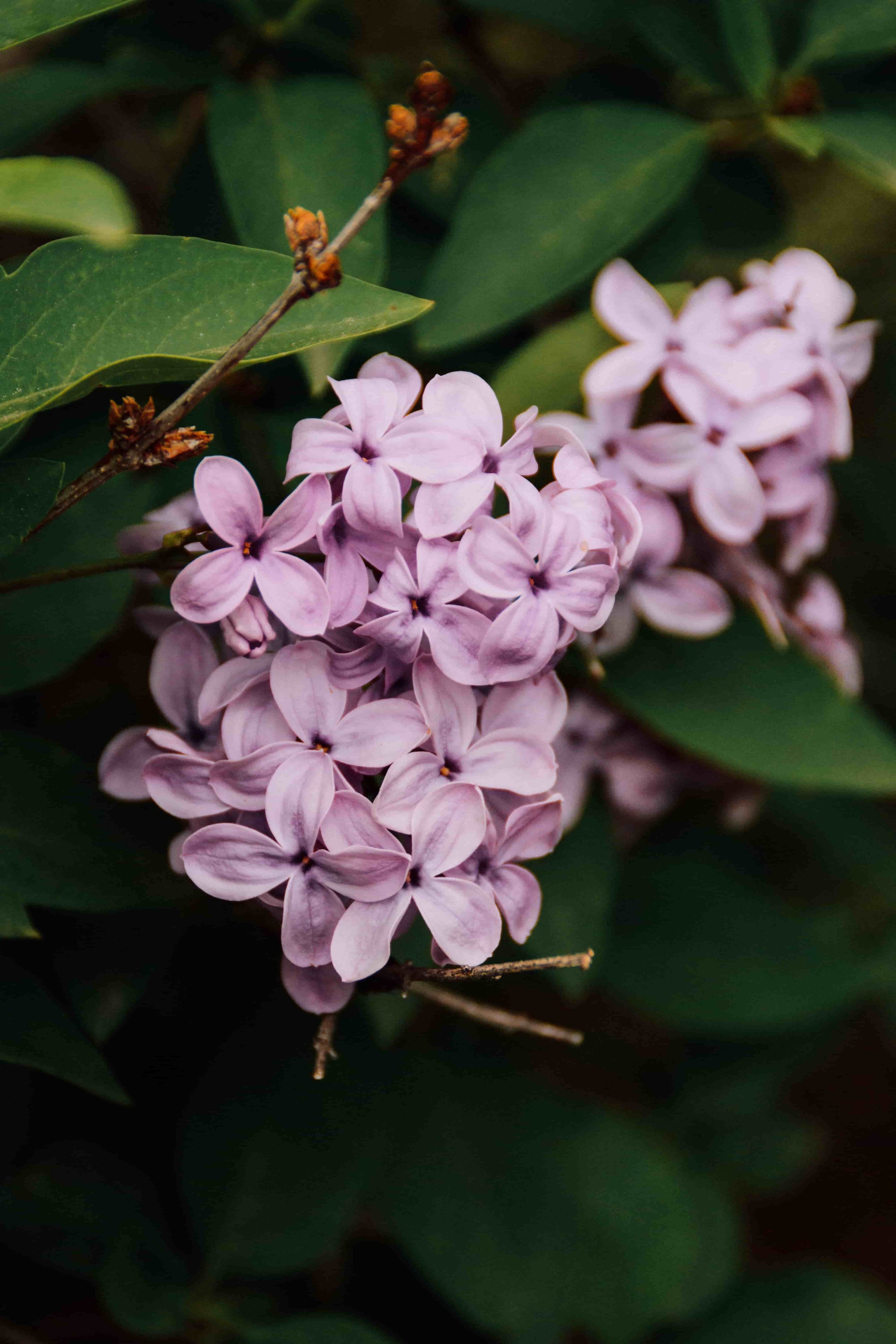
ask about sustainable growing methods:
It’s important to start a dialogue with your local florist about their growing methods.
Don’t be afraid to ask them if they use organic practices or synthetic pesticides.
“Letting your florist know that you value sustainability means that they might make a more sustainable choice down the road if they aren’t already,” says Chelsea.
Asking questions promotes conversation, which can lead to big changes in the future.
Since flowers are not an edible crop, they’re typically exempt from regulations on pesticide use.
This means the cut flower industry is one of the biggest consumers of pesticides worldwide.
Pesticides are not only dangerous to us, but they’re also terrible for biodiversity!
If a bee or hummingbird tries to drink the nectar from a flower sprayed from pesticides, it could die.
We need our pollinators alive and well, so creating a demand for organic, pesticide free flowers is important.
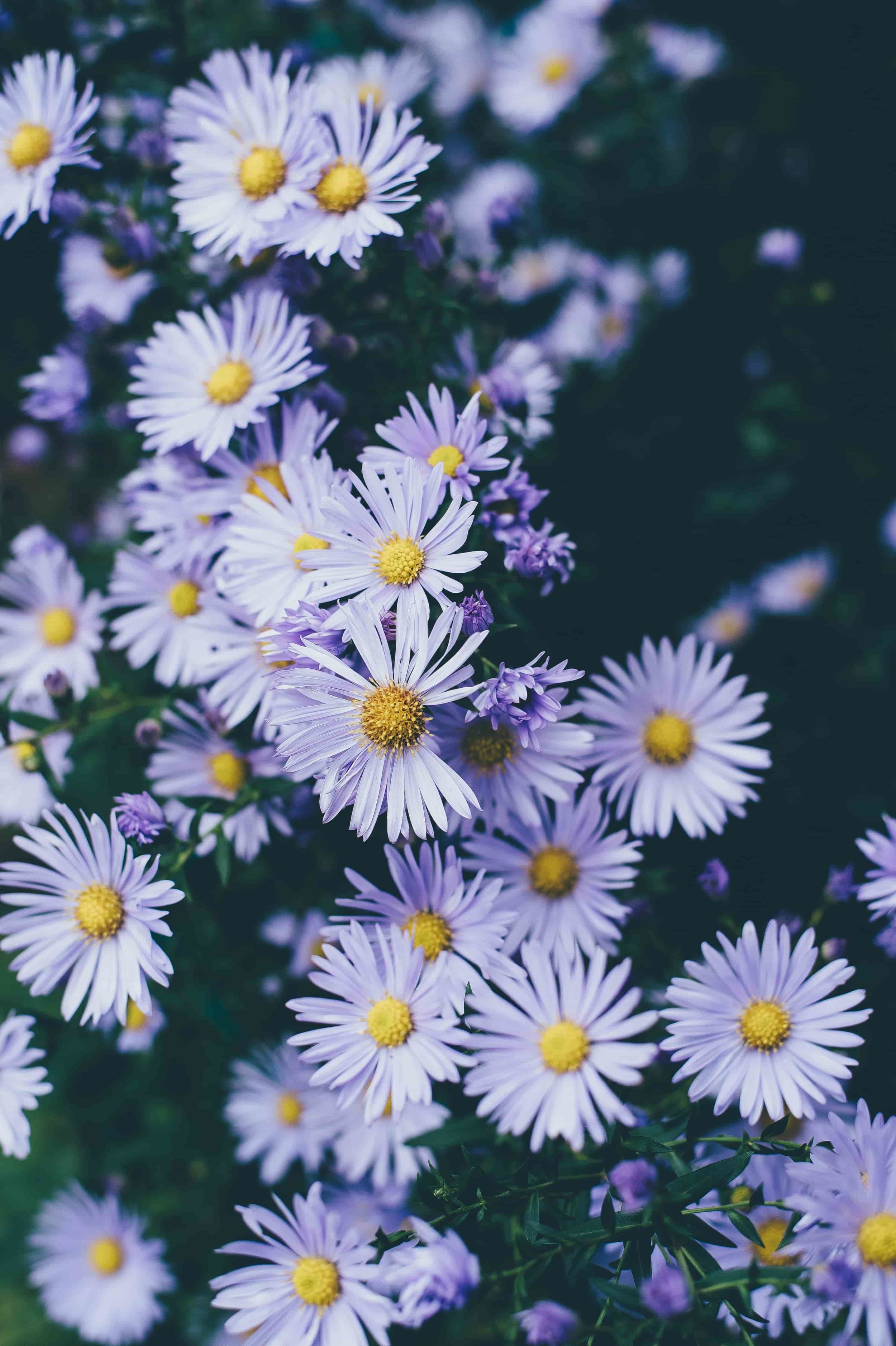
“Certified organic flowers aren’t really a demand at the moment, which is unfortunate,” says Chelsea, “But, there are lots of things that a grower can do to maintain integrity in the field.”
For example, Chelsea has committed to being no till, and she doesn’t use any synthetic pesticides or fertilizers.
Instead, she sprays her plants with fish emulsion, which is a great way to get a healthy fertilizer into the plants.
Chelsea also has tons of creative, natural methods for pest control, like using diatomaceous earth and neem oil to fight off Japanese beetles.
She even puts organza bags (those little drawstring bags that jewelry sometimes comes in) over the heads of every single dahlia flower to ward off pests.
“Using organic practices is a lot harder, and a lot more labor intensive, and most of it doesn’t happen overnight,” says Chelsea, “But commitment to the earth isn’t about taking the easy way out.”
Bottom line: Make sure to ask your florist what their growing methods are, and create a demand for greener practices.
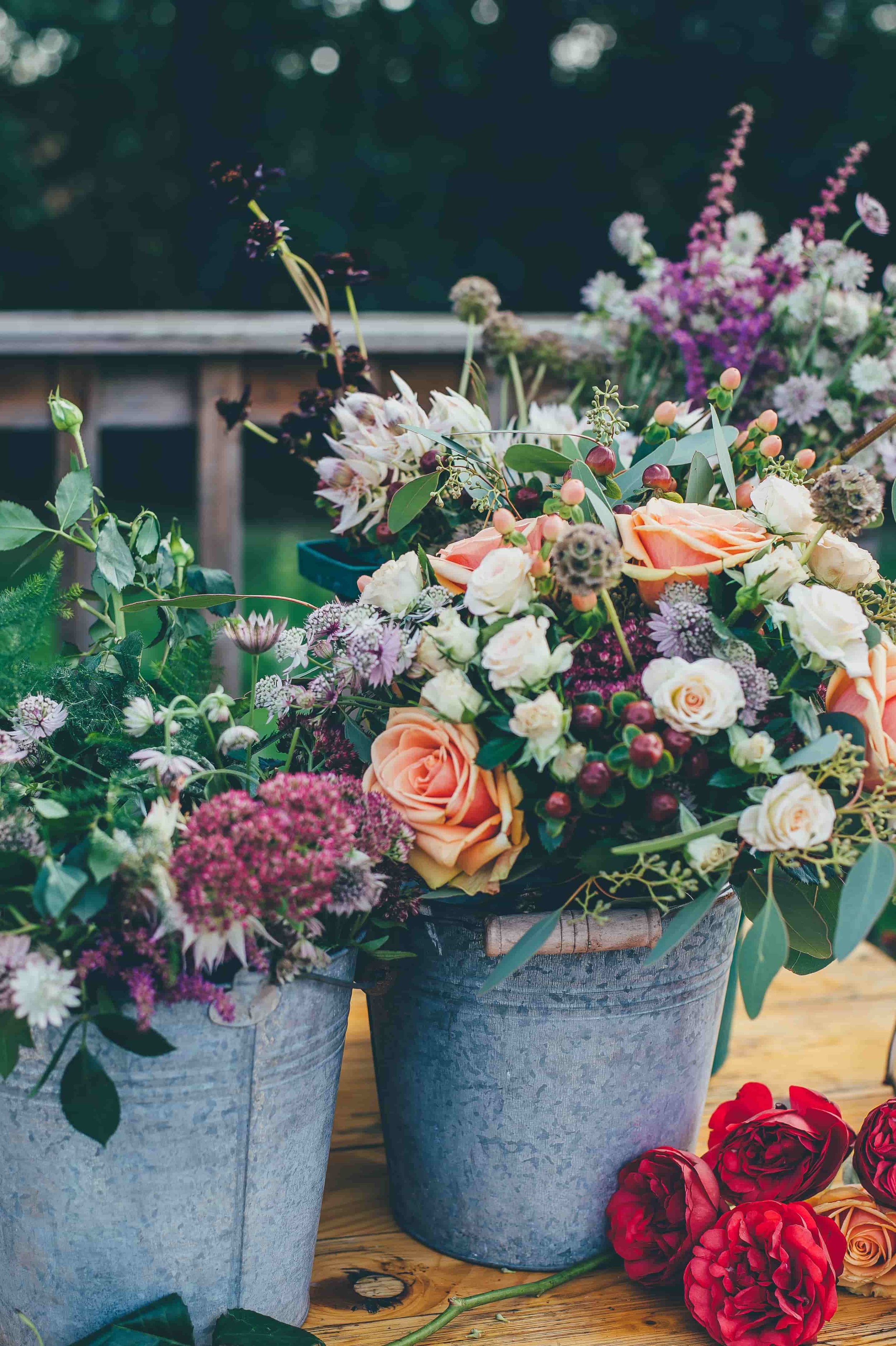
ditch plastic:
You probably don’t need me telling you plastic is bad for the environment by now.
Still, most flowers come wrapped in plastic cellophane wrap or use floral foam.
“Ask if [your florist] uses [floral foam], and hopefully the answer will be no!” says Chelsea, “Floral foam is made of carcinogenic materials that are harmful to florists and their customers.
Plus, it breaks down to microplastics. Yuck!”
Thankfully, according to Chelsea, a lot of florists are getting out of the habit of selling designs that can only be achieved with floral foam.
In fact, Chelsea says 90 percent of the designs you see on Pinterest can be made without foam.
“If your florist can’t find a way to create what you want without foam, find someone else who will!” says Chelsea.
It’s not worth sacrificing your health, or the health of the earth, for one beautiful, ephemeral display.
There’s also the issue of flower bouquets being wrapped in plastic cellophane.
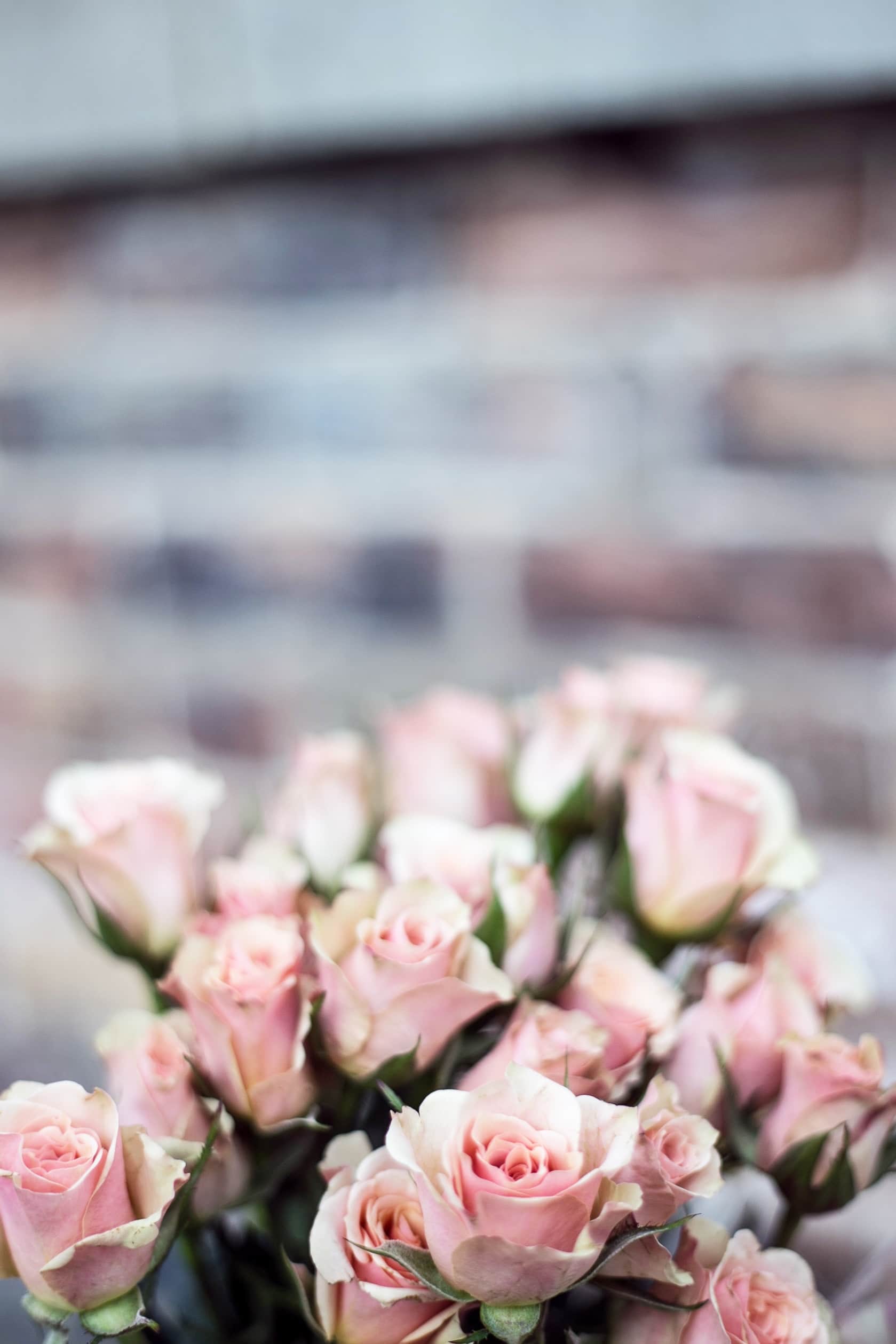
Remember how I mentioned 100 million roses were grown just for Valentine’s Day alone?
Imagine each individual rose wrapped in plastic and how much waste that produces, and that’s just one day of the year!
“If you’re buying a bouquet, ask for it to be wrapped in paper instead of plastic, and reuse the rubber band,” says Chelsea.
You can ask for your flowers to be wrapped in butcher paper, tied together with twine, or put in a glass jar – get creative!
The florist is supposed to satisfy the customer after all, so more than likely they’ll want to accommodate you.
“If you’re getting married, let your florist know that you would like them to use sustainable practices,” says Chelsea, “It is more work and requires more planning on the florist’s end, but it needs to become the new standard.”
Bottom line: Ask your local florist to omit the floral foam and plastic cellophane wrap when creating your floral designs.
Do you have any sustainable florists near you?
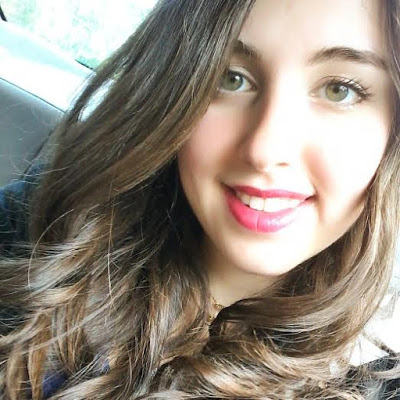
Guest Post: Ariana Palmieri is the founder of Greenify-Me.com, a blog dedicated to zero waste living and sustainability. Her work has been featured on MindBodyGreen, Green Matters, The Penny Hoarder and several other publications. Get her free e-book “10 Ways to Reduce Trash” by signing up to her newsletter and learn how to reduce your waste today.


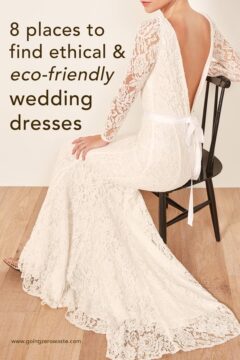
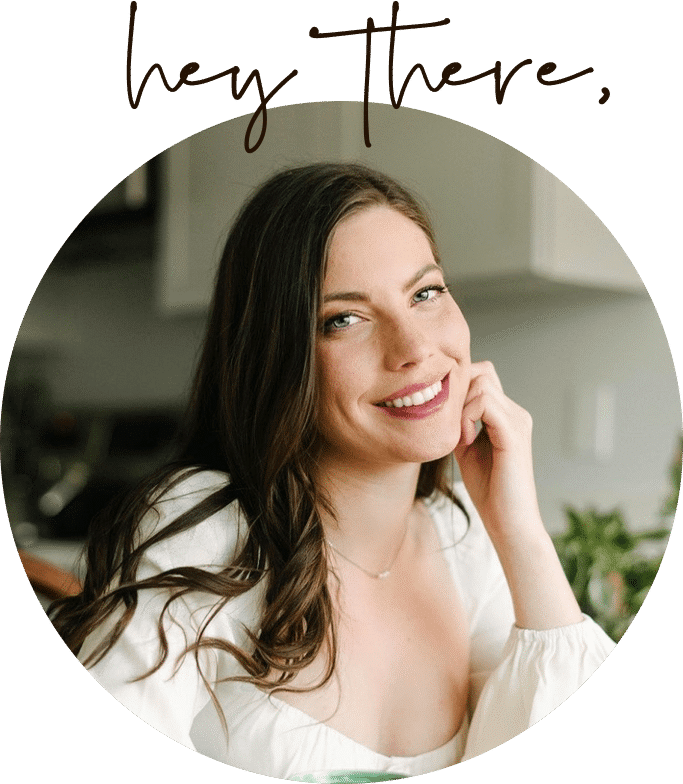

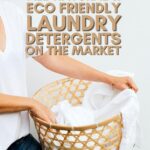


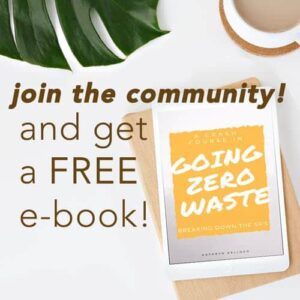

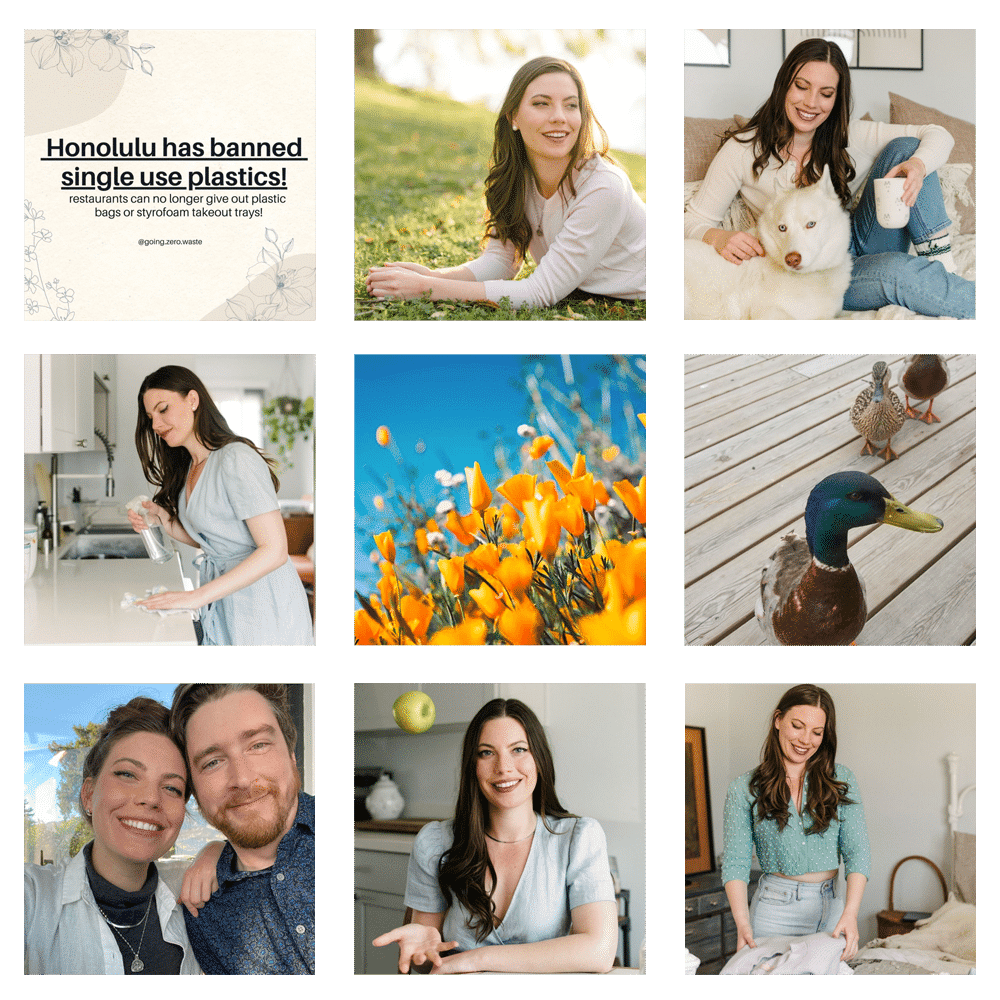
We worked with Rumphius Flowers in New England – – -gorgeous local flowers of a wide variety. Glorious and beautiful.
Hello 1st of all florists do not throughout 40% of their product .. My average waist hovers around 4%,,,there is no way to obtain sustainable organic flowers currently anywhere Add a practical usable level .. there are not enough farms producing them and the cost would be prohibitive to most people… you’d have to have just the right flowers colors growing in the week you are getting married for that to work flower farmers. Foam ia now in a sustainable formula, it is not carcinogenic hurting other florists there has been no proof that florisys are dying earlier from use of foam. if you wanna save the planet there’s a million other ways that are more effective than worry about the 2 blocks of foam at the average person would use in a year ,,nit using plastic bags altogether ,,water bottles your automobile your furniture your clothes creates much more problems then foam.